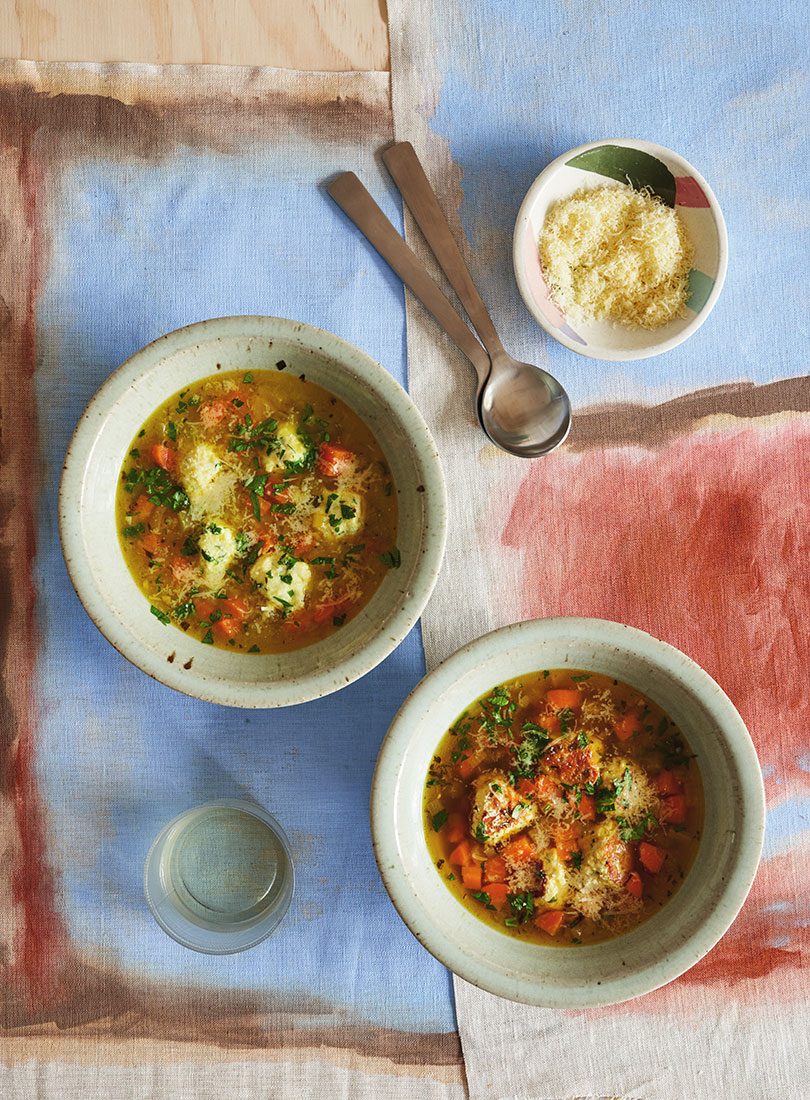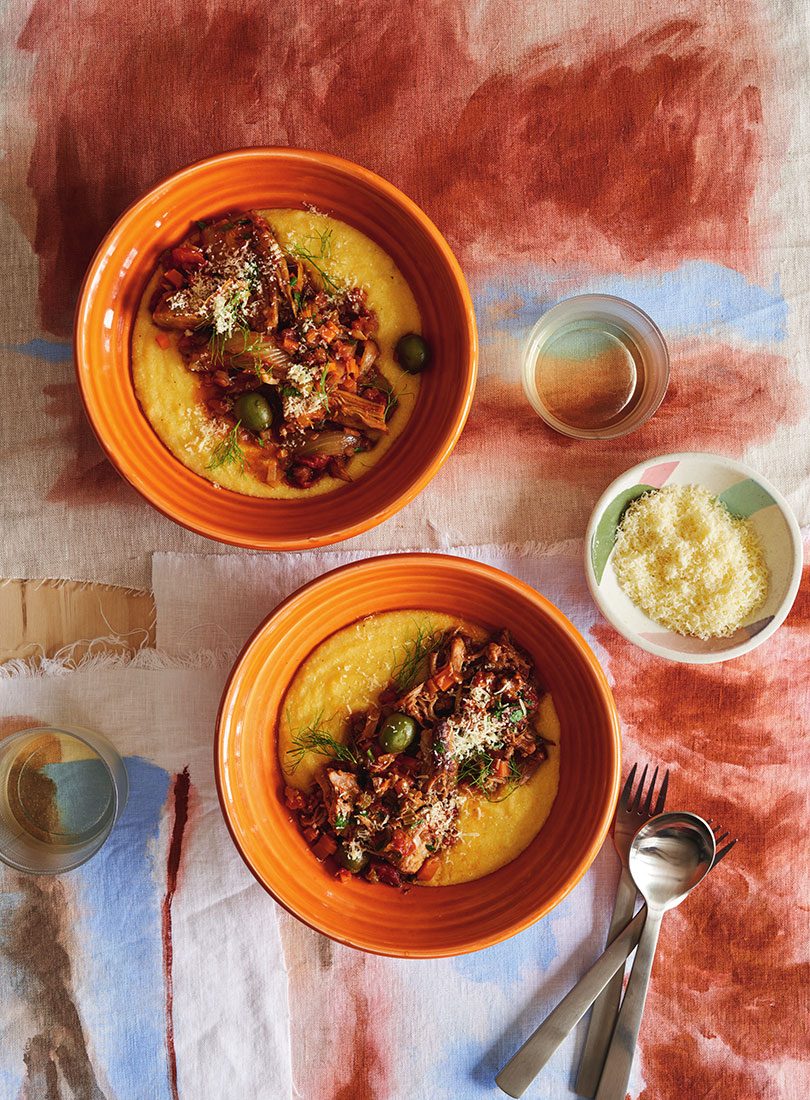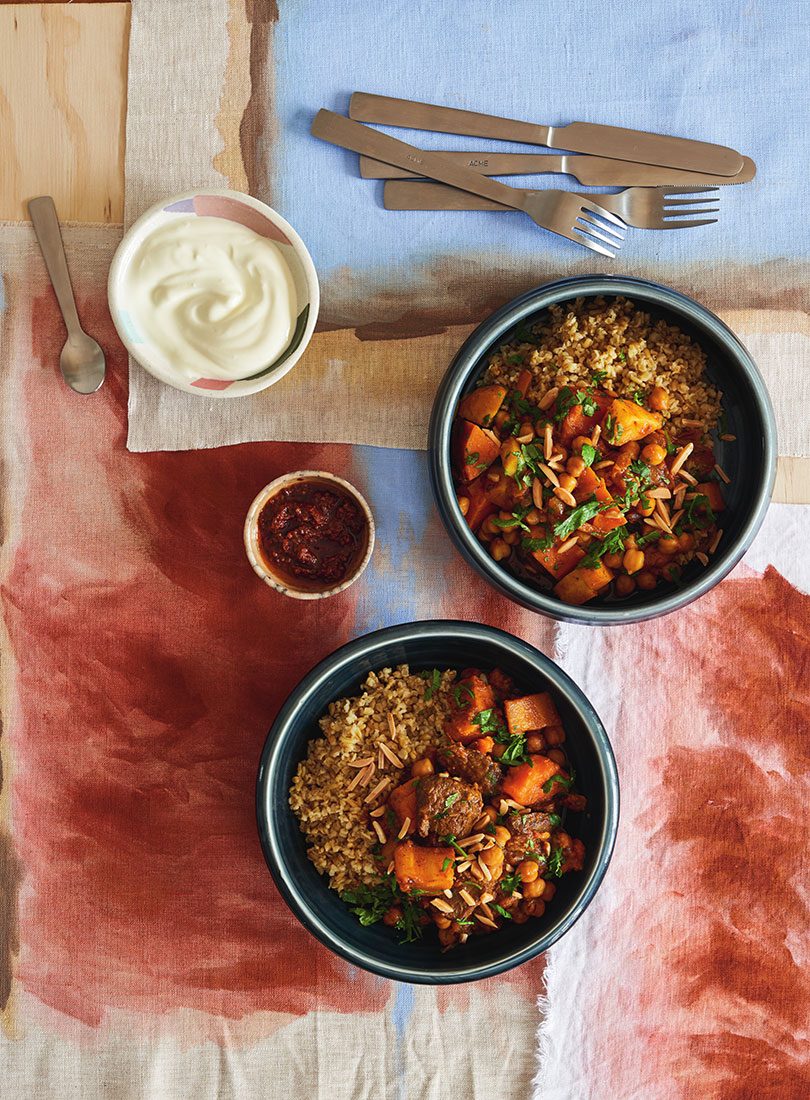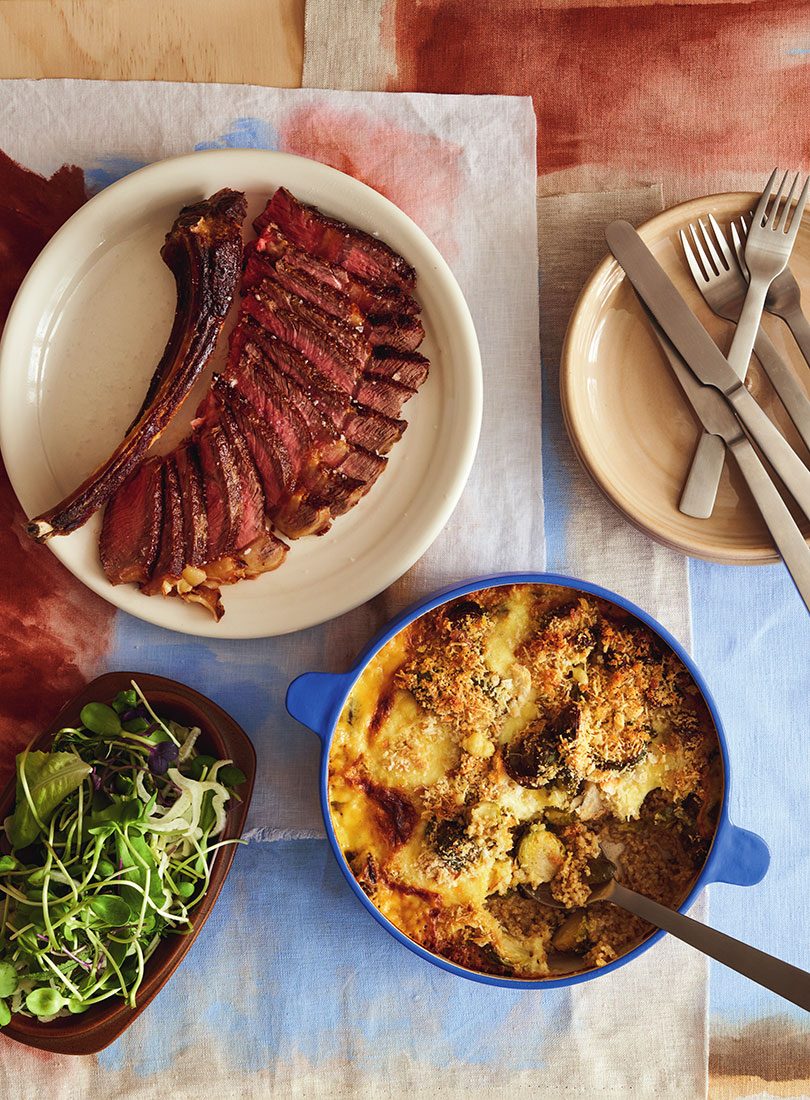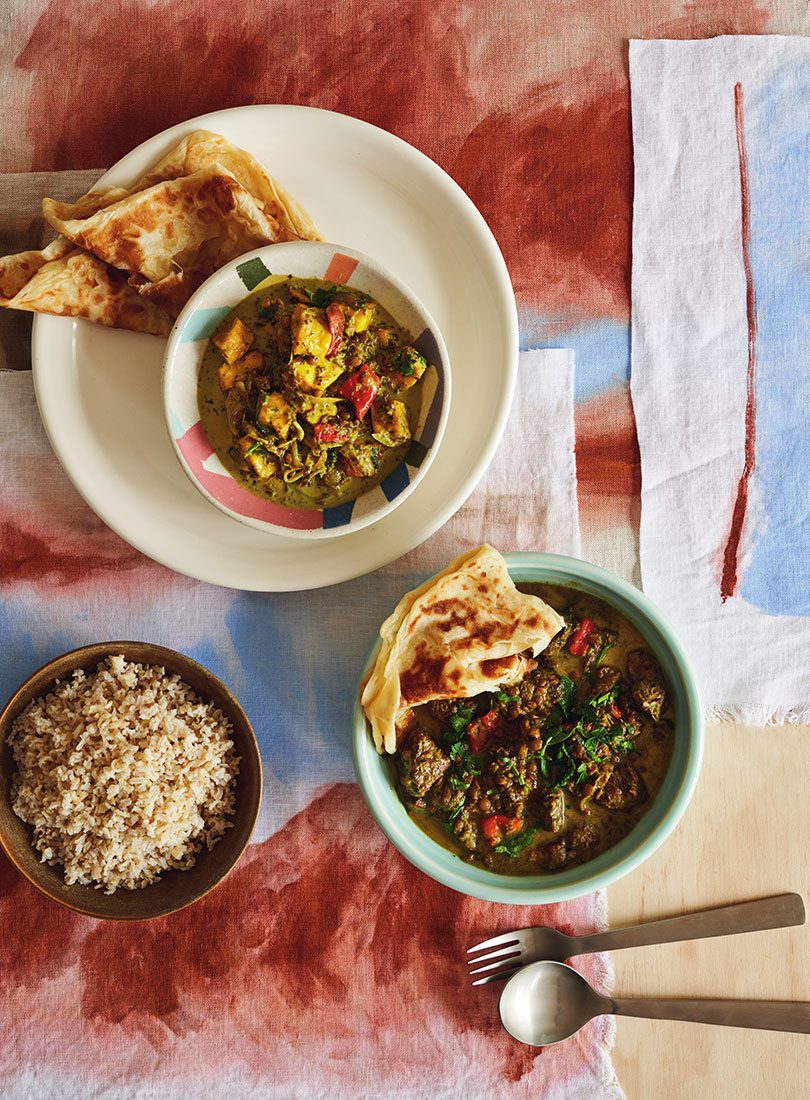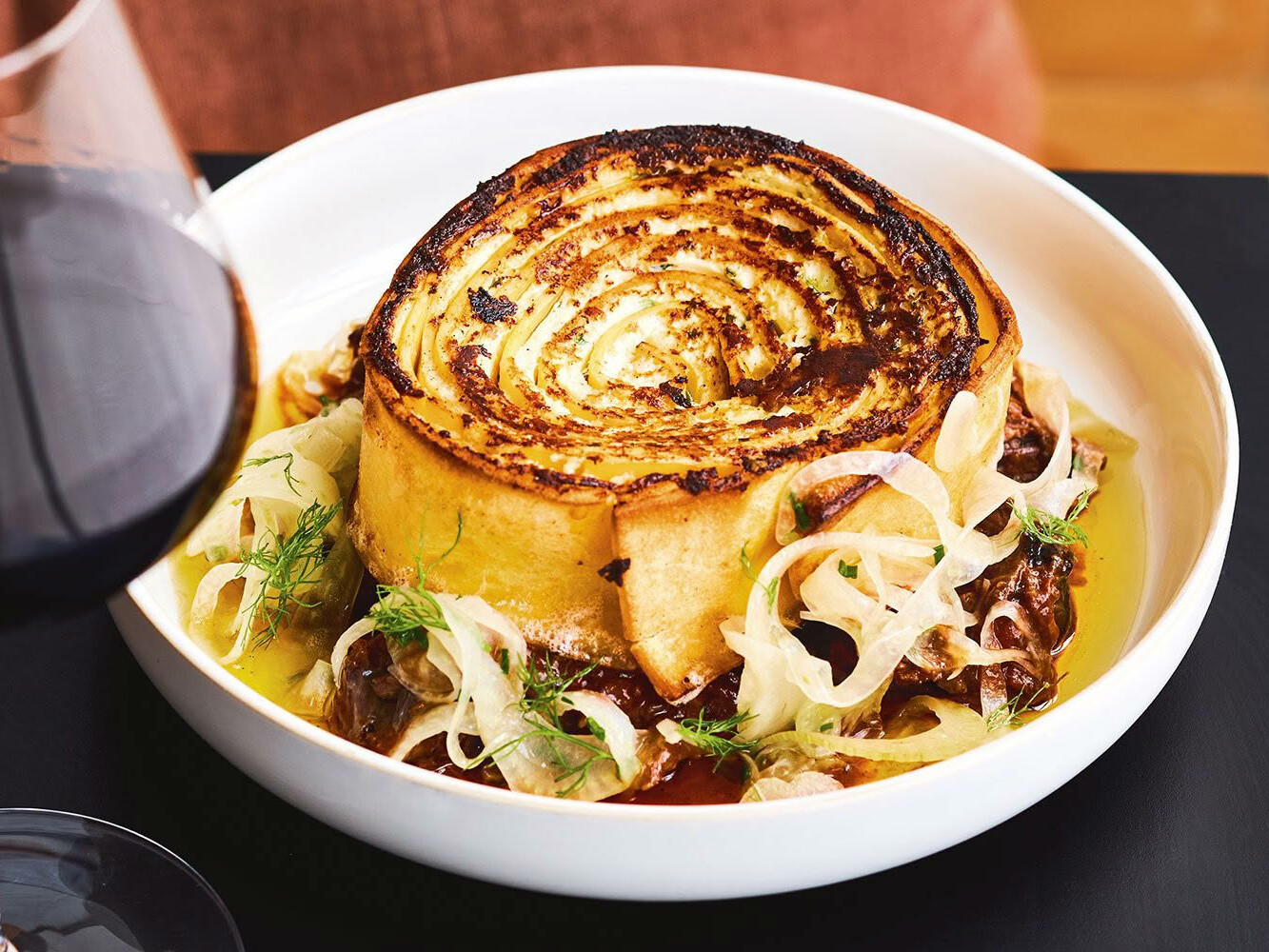With just a few genius tweaks, Ginny Grant’s recipes serve up family dinners for both vegetarians and meat eaters, without cooking two separate meals.
With mixed dietary requirements in our home, I tend to make most of our meals vegetarian and then, if I’m feeling so inclined, cook some meat alongside (which is what I suspect most people in a similar situation do). This is fine in summer or on a weeknight when you slap something on the barbecue or in a pan, but in the midst of winter what I’m wanting is slow-cooked comfort, and that is where things can get a little tricky.
I seldom cook two completely different meals. Instead, I think about how I can use the same basic recipe, with the same or similar supporting ingredients and go from there. Meatballs and spaghetti are a good example when thinking about how to cook like this: both the classic meatballs and the vegetarian version share the same basic sauce, while the ingredients that go into both versions are the same except for the proteins.
What I’ve done here is try to make recipes that divide easily, so that if you choose to just make one version it will be easy to do so. What can be a little tricky is getting the amounts right for four people, which is usually the number I am cooking for (unless you are buying meat from a butcher, most meat is sold in amounts of 400-500g). I concentrate on putting together a meal that suits both types of eater, and if I feel it’s a little light for the vegetarians then I may add extra pulses or nuts to their meal. I’m fond of leftovers, so seconds for lunch the next day are always appealing but often they can be frozen if need be.
Increasingly, I’m buying smaller amounts of meat and what I do buy is better quality and ethically sourced. It smacks of privilege to dictate what brands or suppliers you should use; I think we should use what we can afford at the time, but I do like to highlight some great suppliers when I can.



